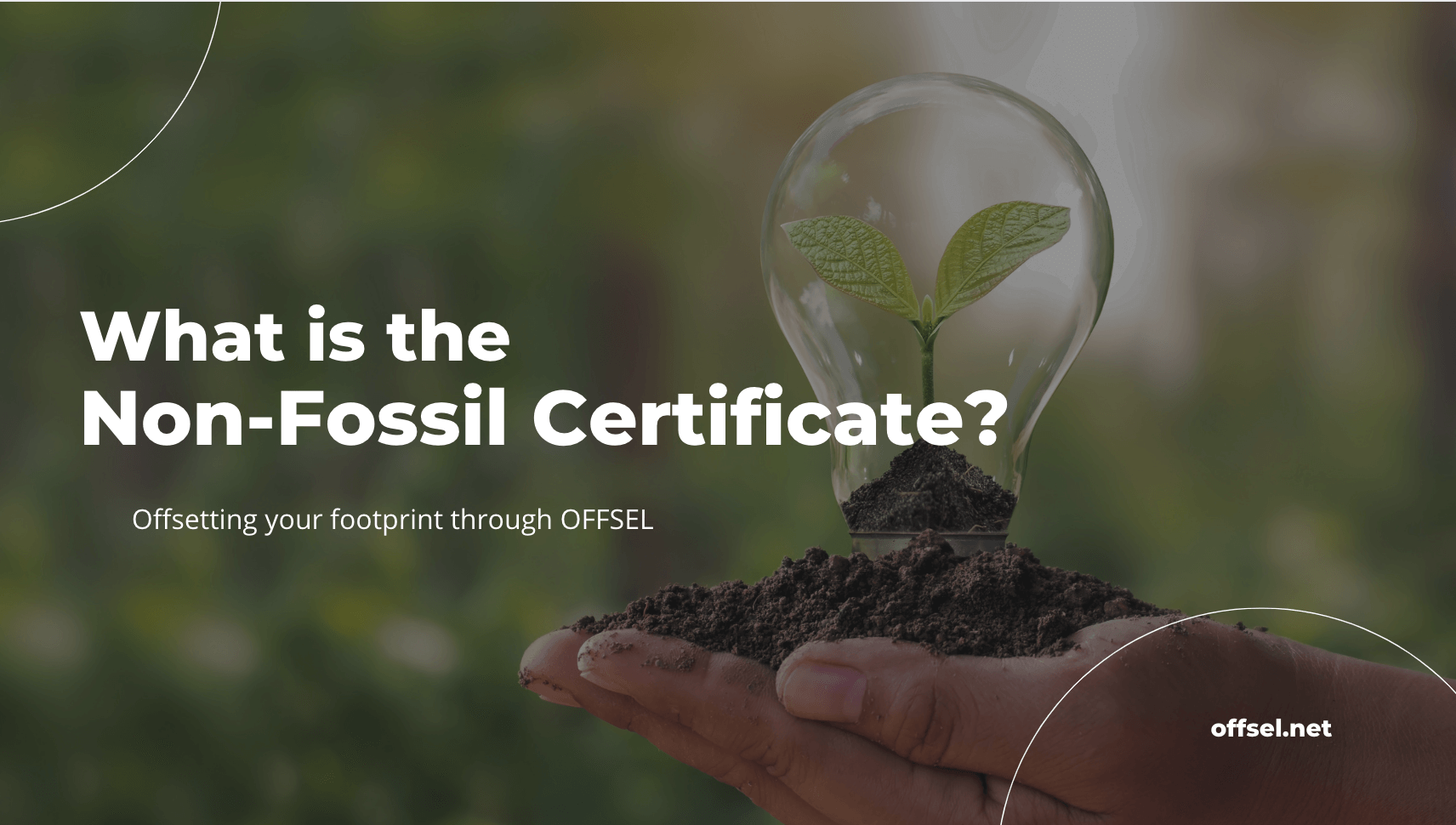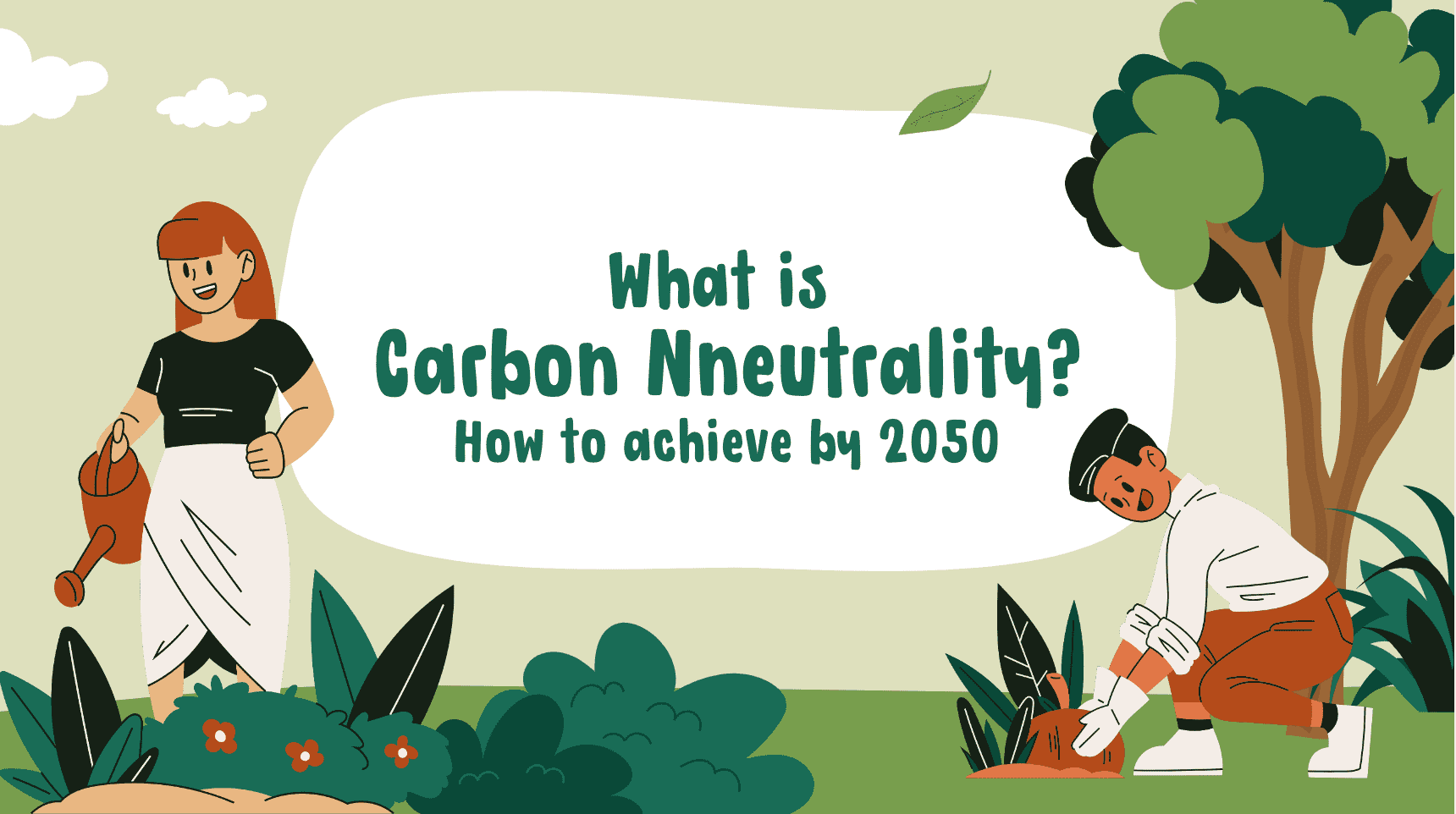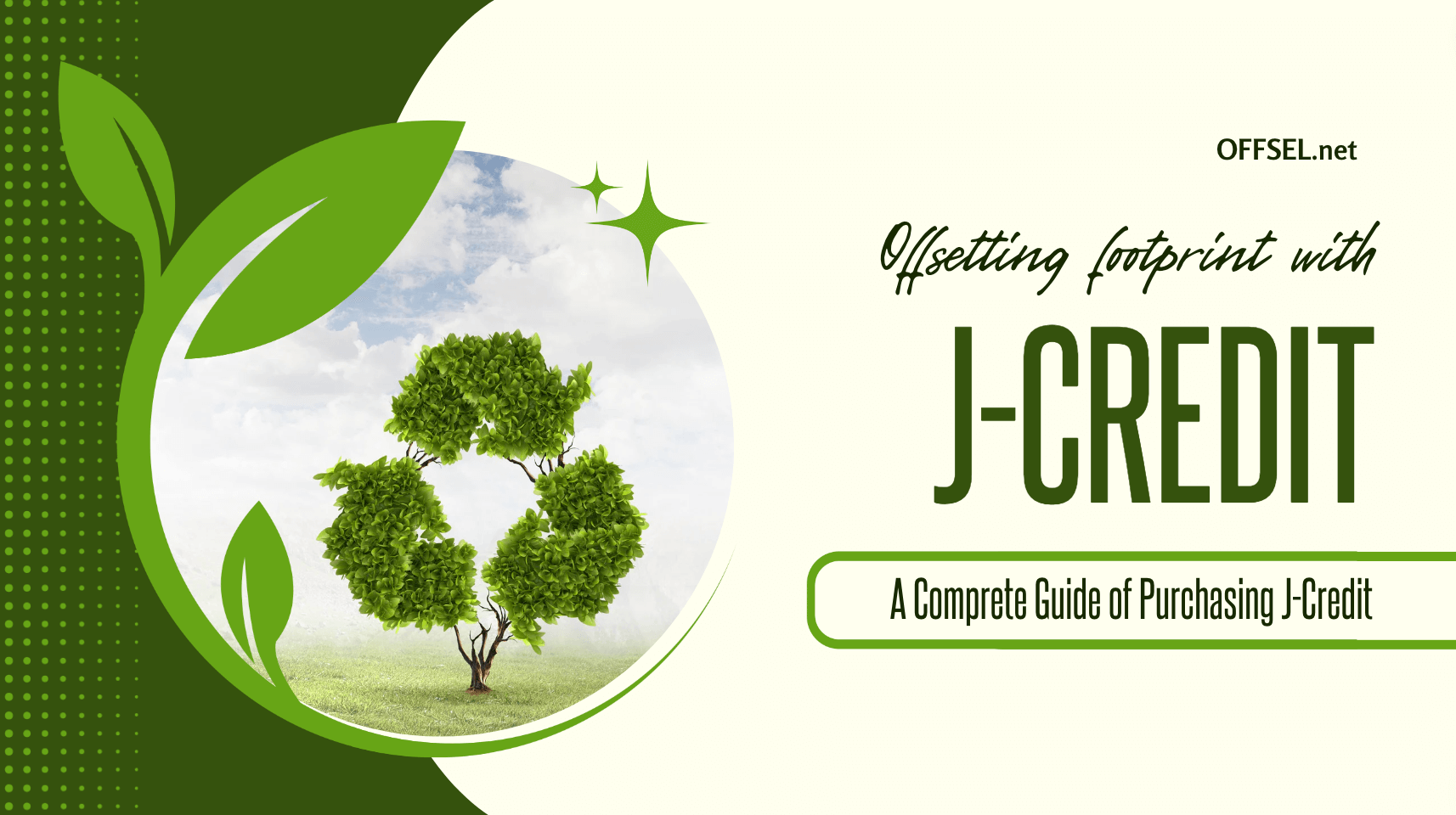What does “Carbon Offsetting” mean?
- CO2-reduction
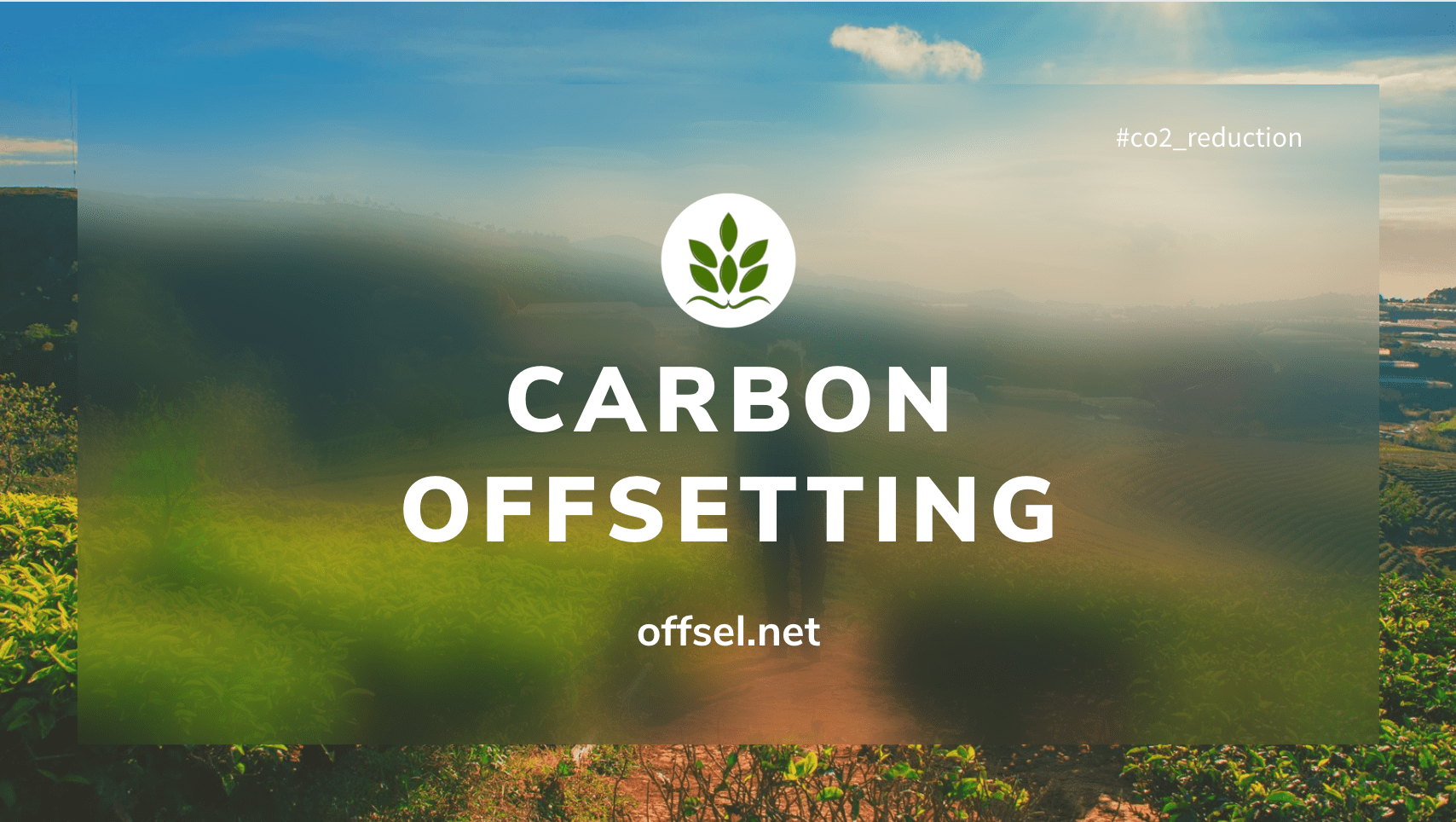
Table of Contents
What is the meaning of “Carbon Offsetting”?

The term “Carbon offsetting” (or simply “offset credit”) refers to the efforts made to compensate for greenhouse gases (GHGs) like CO2 emitted during activities, by first acknowledging the scale of emissions and then reducing them.
If the reduction is insufficient, further efforts are made to offset the remaining GHG emissions. A drawback of carbon offsetting activities is that they are difficult to visualize, mainly because they deal with intangible aspects like the emission, reduction, and absorption of invisible and untouchable greenhouse gases. To deepen understanding and trust in carbon offsetting activities, it’s important to explain the significance of these efforts to consumers who purchase and use offset products.
Why does Carbon offsetting matter?
Carbon offsetting activities began in 1997, initiated by a British tree-planting organization, and have since spread worldwide due to the acceleration of global warming.
The successive occurrences of abnormal weather conditions across the globe, a consequence of global warming, led to the establishment of long-term goals in the Paris Agreement, such as “efforts to limit the rise in global average temperature and to peak global greenhouse gas emissions.”
The purpose of carbon offsetting activities is to promote these goals, striving to balance greenhouse gas emissions and absorption in the latter half of the 21st century, as agreed upon in the Paris Agreement.
The need to reduce Greenhouse Gases to mitigate global warming
In August 2021, the IPCC (Intergovernmental Panel on Climate Change of the United Nations) released its Sixth Assessment Report. The report includes the following key points regarding global warming:
- If the emission of greenhouse gases continues at the current rate, it’s highly likely that the global average temperature will rise more than 1.5 degrees Celsius above pre-industrial levels between 2021 and 2040.
- Even with reduced emissions, there’s still a possibility that the temperature increase could exceed 1.5 degrees.
An increase of 1.5 degrees is considered the threshold where global warming will have serious impacts on the Earth and humanity, and it is a target effort outlined in the Paris Agreement. To achieve this target, it’s crucial to continue efforts to reduce greenhouse gas emissions.
Benefits of carbon offsetting
Pros1. Facilitating carbon neutrality
Carbon offsetting plays a crucial role in achieving the global targt of carbon neutrality by 2050. This concept involves balancing out greenhouse gas emissions through greening initiatives. It’s a significant strategy adopted by various governments and corporations, enabling even ambitious environmental goals to become attainable.
Pros2. Balancing greenhouse gas emissions
While completely eliminating greenhouse gases is unfeasible, carbon offsetting provides a viable solution. By participating in activities like afforestation, both individuals and companies can counterbalance their emissions. This includes simple acts like growing plants to offset emissions from household appliances.
Pros3. Boosting the environmental economy
Carbon offsetting not only addresses environmental concerns but also stimulates the green economy. Increased demand for carbon credits aids businesses specializing in emission reduction, enhancing their financial viability and operational capacity. This support extends to the forestry sector, helping overcome financial challenges and revitalizing local communities.
Moreover, urban areas can contribute to greening efforts by purchasing credits, furthering the collective move towards carbon neutrality.
Challenges of carbon offsetting
Cons1. Ineffectiveness in addressing root causes
Carbon offsetting, fundamentally, does not tackle the root causes of carbon emissions. It often acts as a band-aid solution, allowing businesses and individuals to continue their emission-intensive activities while outsourcing the responsibility of carbon reduction. This approach can lead to a lack of genuine commitment to reducing emissions at the source, delaying the transition to more sustainable practices and technologies.
Cons2. Potential for greenwashing
Carbon offsetting is susceptible to greenwashing, where companies or individuals use offset investments to create an environmentally friendly image without making substantial reductions in their own carbon footprint. This misrepresentation can mislead consumers and stakeholders about the entity’s actual environmental impact.
Cons3. Uncertain and inconsistent outcomes
The outcomes of carbon offset projects are not always guaranteed or consistent. Projects like reforestation are subject to various risks, including natural disasters, disease, or mismanagement, which can negate the expected carbon absorption.
The permanence of these projects is also questionable, as future land use changes or policy shifts can reverse the benefits.
Five steps of offsetting carbon emissions
1. Quantifying emissions
The first step is to accurately measure the amount of greenhouse gases (GHGs), primarily CO2, that an individual, organization, or activity emits over a certain period. This could involve calculating emissions from energy use, transportation, industrial processes, or other sources. The goal is to have a clear understanding of the carbon footprint.
2.Identifying reduction strategies
After quantifying emissions, the next step is to explore opportunities to reduce GHGs.. This might involve switching to renewable energy sources, improving energy efficiency, changing transportation modes, or adopting more sustainable practices. Reduction is always the first approach before considering offsetting.
3.Selecting offset options
Once the potential for direct emission reductions has been maximized, the remaining emissions can be offset through the following examples:
- Tree Planting and Reforestation: Planting trees and restoring forests are effective natural methods for carbon sequestration. Trees absorb CO2 as they grow, which helps to offset emissions. This can be done independently or through supporting reforestation projects.
- Renewable Energy Investments: Investing in renewable energy sources like solar, wind, hydro, and geothermal energy can help reduce reliance on fossil fuels, which are major sources of GHGs.
- Sustainable Agriculture Practices: Adopting sustainable agricultural practices can both reduce emissions and enhance carbon sequestration in the soil. This includes practices like reduced tillage, cover cropping, crop rotation, and organic farming.
4. Purchasing carbon credits
For the emissions that cannot be directly reduced, purchasing carbon credits become remaining options. One carbon credit typically represents the reduction of one metric ton of CO2 or an equivalent amount of other GHGs. These credits are bought from the offset projects, providing them with funding to continue or expand their activities.
5. Reporting and verification
The final step involves transparent reporting of both the emissions and the offsets. This ensures accountability and credibility in the offsetting process. Verification, often done by a third-party, confirms that the emission reductions claimed by the offset projects are real, additional (meaning they wouldn’t have happened without the offset funding), permanent, and quantifiable. Regular monitoring and verification are crucial to maintain the integrity of the carbon offsetting process.
Example of companies buying carbon offsets in 2022 to 2023
Delta Air Lines, Inc.

In 2022, Delta purchased and retired $116 million in carbon offsets, which were related to a portion of their airline segment’s 2021 and first quarter 2022 carbon emissions. These offsets are part of their broader goal to spend $1 billion through the end of 2030 towards airline decarbonization, focusing on solutions beyond just offsets.
The offsets play a role in complying with the global CORSIA scheme and in achieving net-zero emissions by 2050. Delta has supported out-of-sector solutions for years through the purchasing of carbon offsets and continues to support initiatives like the LEAF (Lowering Emissions by Accelerating Forest Finance) Coalition, which aims to reduce greenhouse gas emissions by financing large-scale tropical forest protection.
Microsoft
One notable initiative is Microsoft’s deal with Chestnut Carbon, a startup focused on carbon offsets. This deal involves Microsoft acquiring carbon removal credits linked to the planting of new trees in previously farmed or otherwise used lands, particularly in the Mississippi Alluvial Valley. These credits are part of a 15-year agreement and are expected to equate to the removal of up to 2.7 million tons of carbon throughout the contract’s lifespan. The first of these credits will be delivered to Microsoft in three years, allowing time for the newly planted trees to mature.
Source: Trading View
Moreover, Microsoft’s carbon removal portfolio has expanded to include ocean carbon removal techniques. These innovative methods involve seaweed sinking, microalgae cultivation, and electrochemistry using ocean water. However, Microsoft has noted the need for stronger certifications and policies around the measurement, reporting, and verification of these new tools to ensure their effectiveness. Additionally, Microsoft points out that carbon removal efforts will likely be concentrated in locations where infrastructure for such projects can be feasibly built, and emphasizes the importance of CO2 storage projects for long-term sequestration.
Source: Green Biz
CANON INC.

The Japanese electronics company Canon Inc. has been conducting Life Cycle Assessments (LCAs) since 1992 to understand the CO2 emissions throughout the life cycles of its products. As a result, they have successfully determined the CO2 emissions of all models of their office multifunction devices and have obtained certification for their carbon footprint declaration.
Currently, Canon enegages in carbon offsetting activities through the J-Credit scheme. Additionally, they are disclosing information related to their carbon offsetting activities and providing details about the environmental responsiveness of their products, including models that are compliant with the offset system, on their official website.
Carbon’s offsetting is one of the methods for achieving carbon neutrality, and there’s a growing global awareness about actively engaging in carbon compensation activities due to the variety of available methods.
The activation of environmental businesses through carbon credits is increasing the number of ways to offset greenhouse gases, making carbon offsetting activities more accessible and familiar.
Offsetting your carbon through OFFSEL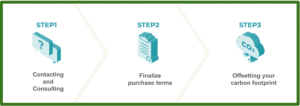 An authorized agent, OFFSEL is a Japanese service that purchases non-electric renewable energy values, aiding corporations and local governments in carbon offsetting and decarbonization efforts. An authorized agent, OFFSEL is a Japanese service that purchases non-electric renewable energy values, aiding corporations and local governments in carbon offsetting and decarbonization efforts.
|
CONTACT US
Please feel free to contact us at anytime.
We will get back to you as soon as we
can!
Editor
OFFSEL Owned by Erevista Inc, OFFSEL is specializes in Environmental issues, especially in carbon neutrality. We primarily provide the latest information on environmental energy.

